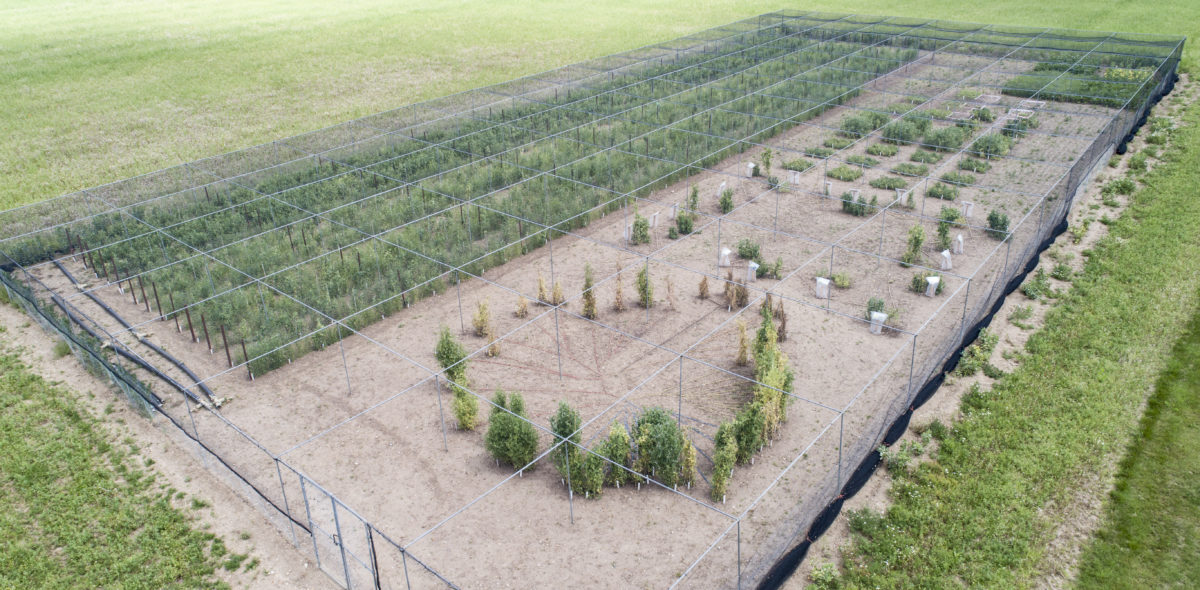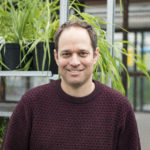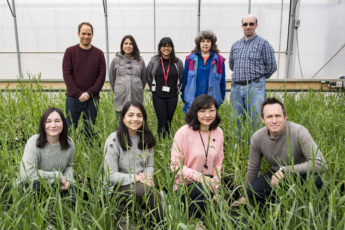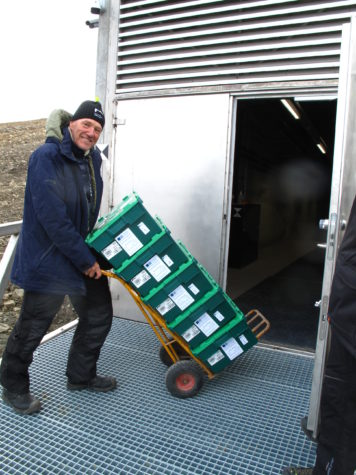September 1, 2020

For the first time since the large seed deposit in February, NordGen has now carried new seed samples into the Seed Vault. Due to the pandemic, several genebanks have had to postpone their planned deposits – but first-time depositor Germplasm Resources Unit at the John Innes Centre managed to send their entire pea collection. 2922 seed duplicates are now put on the shelves of the Seed Vault for safe, free-of charge and long-term storage. The picture above was taken during the propagation of the peas.
The Germplasm Resources Unit (GRU) in John Innes Centre (JIC) is an internationally recognised repository for the long-term curation and provision of UK strategic crop and crop-wild-relative seeds. It is a UK National Capability supported by the Biotechnology and Biological Sciences Research Council.

Noam Chayut, GRU Manager at The John Innes Centre
“The germplasm we conserve need to be safeguarded for our future food security. The germplasm that we maintain in the UK is widely and globally used and fragments of our collections can be found in many other places throughout the world. But to have the entire pisum collection duplicated in a different political entity, is of great importance if anything catastrophic should happen here. Just think about it; one year ago, we couldn’t imagine this pandemic, but today we live in a changed world, it is our responsibility to prepare for the worst”, GRU Manager Noam Chayut said.

The GRU staff has worked hard to propagate the pea collection and send it to Svalbard.
The John Innes Centre, located two hours’ drive northeast of London, is an independent, international centre of excellence in plant science, genetics and microbiology with a century long history of pea research and curation. This was the first JIC GRU deposit to the Svalbard Global Seed Vault, but they’re planning to send more seeds in the future.
Depositor number 88
Next up, the GRU is planning to send seed duplicates of the A.E. Watkin collection, a wheat collection which is a pillar for the UK national pre-breeding consortium project called ‘Designing future wheat’. Both the original landrace diversity in the collection and the derived material which is now being extensively genotyped and phenotyped will be deposited in the Seed Vault. As the John Innes Centre now joins the Svalbard Global Seed Vault family, they become genebank number 88 to deposit seeds in the Seed Vault.

NordGen’s Seed Vault Coordinator Åsmund Asdal standing in front of the Seed Vault with plastic boxes containing peas from the John Innes Centre.
“We are very pleased that the Germplasm Resources Unit at John Innes Centre has decided to safeguard their pea collection in the Seed Vault. And we look forward to receiving more seed duplicates in the future. The GRU has one of the world’s most comprehensive collections of wheat, barley, oat and peas” said Åsmund Asdal, Seed Vault Coordinator at NordGen.
“We hold collections of strategic crops, crop wild relatives, induced and derived diversity. A lot of our material comes from historical expeditions and some germplasms comes from exchange with other genebanks. For example, some of the peas we’re depositing now is originally from NordGen” Noam Chayut said.
100-years experiment
Along with the pea collection from the John Innes Centre, NordGen is also bringing in the first seed samples in the so called new 100 year Seed Experiment in the Seed Vault. The first portions of experiment material consisting of seed samples of four crops have been produced by the German genebank IPK. The experiment will investigate the viability of seeds stored under optimal conditions. In total 13 crops are part of the experiment which is involving six different genebanks and will end in 2120. Read more about the experiment here.
The Svalbard Global Seed Vault is owned and established by Norway. It is operated in a unique partnership with the Norwegian Ministry of Agriculture and Food, NordGen and the international organization Crop Trust. Read more about the Seed Vault here.